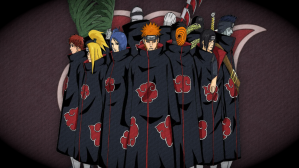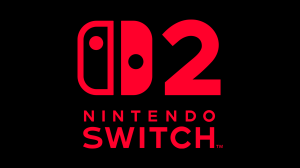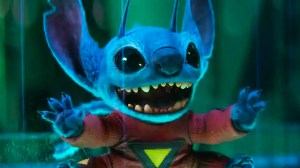This week sees the release of the second issue of Scott Snyder’s All-Star Batman.
Videos by ComicBook.com
While the series — like so much else at DC right now — has rotating art teams, it’s not twice-monthly, and those teams will rotate in and out based on story arcs. For the first, he’s working with legendary draftsman John Romita, Jr., who worked on basically every Marvel Comics series except Fantastic Four as well as co-creating Kick-Ass before coming over to DC and taking on first Superman and then a pair of prestigious Batman-related projects.
The two are reinventing the character of Two-Face — but that’s not all. While Batman tools around the desert in a souped-up Batmobile, both Commissioner Gordon and Duke Thomas are having some pretty shocking adventures of their own back in Gotham.
Snyder and Romita joined ComicBook.com to talk about the issue. You can get a copy tomorrow at your local comic shop, or pre-order a digital copy now.

The first issue established the ground rules, but there were still quite a lot of Batman just dealing with Gotham, getting out of Gotham. Now your road trip is in full effect. How does that change your mindset going into this issue?
Scott Snyder: Completely. This is the issue I’ve been dying to get to.
I’m happier with each successive issue of this series. I was really, really excited about the first one because it presents all of the ideas, but it’s also an issue that needs to set the whole thing up really urgently. Whereas this issue, you get into more of the emotional meat — more into the tone we’re going for. All of that stuff ramps up issue by issue by issue, cumulatively.
This one was just an incredible joy to write. It was a chance to start exploring more of the darker and deeper material that we’re going to be mining for the arc.
This is a really cinematic book, even more cinematic than what you were doing with Greg on Batman. Is that a matter of playing to John’s strengths? Obviously we’ve seen that John has this ability to do these widescreen cinematic kind of shots and sequences in books like Thor and Kick-Ass.
Snyder: Yeah, I think, partly that. I don’t think that he has any weaknesses and that playing to his strengths is pretty easy.
With that said, I think it was more about trying to do something that we haven’t done and I haven’t done. Write in a style which challenged me and flexed different muscles.
I did a lot of soul-searching when I knew Batman was going to end, and the only thing I really felt like doing at that time, was to do some of these stories that I had been thinking about. I wanted to do them in ways that would be entirely different than anything I’d written on Batman.
Here, it became about what John would enjoy doing. We had a long talk before we started, about “What if we take him out of Gotham?” What if we make it a road story? Well, if we make it a road story, how about if we give it this hyper-violent feel? If we do that, let me actually cut it so it’s much more kinetic. I won’t do captions.
You get excited about all the tools that you can use that you’ve never tried before. There’s the chronological structure of the whole thing, which has this mirror shape in the first couple of issues, where it goes back in time and then back to the present through those same time periods to hopefully underscore this notion of Two-Face being this mirror image of who we are.
In later issues, by #5, there’s barely any flashback. It just moves really fast toward the end. It kind of careens towards a cliff. The whole arc becomes something that is designed first and foremost to get the most out of the story.
That’s what John and I had long discussions about: all these decisions about the way it’s cut. The cinematic feel, I think, is less about playing to strengths and more about saying “what would tell the best story?” What tools do we use? What techniques do we use to really get at the material that this thing is about?
The story, as fun as it is, is also, for me, is personal. It’s about whether or not we’re better than the accumulation of our personal demons. Are we heroes or villains, deep down?
That was really where the whole thing came from. Then, it just becomes fun. Well, how do you do something that you haven’t seen before visually, while still speaking to that spirit of off-roading with Batman?
John Romita, Jr: Actually, that plays to my answer on this. The setting is what requires cinematography to this extent. When you’re dealing with Gotham, you’re basically fighting crime in an ant farm. It’s crowded. It’s dirty. It’s a tight city.
When you get out into the country like this, you need some wide scope. That’s the genius of the storyline. You get something different, and it allows the artist to expand and breathe a little bit.
You give Greg Capullo this story line and he’ll come up with the same kind of cinematography. That’s what a writer does to the artist, for the artist.
As we are out here on the road, you’ve also got a couple pages here and there dedicated to a very intriguing subplot happening in Gotham. Can you tease a little bit about what’s going on there?
Snyder: Sure. I think in the non-spoiler answer there, it would be that I want to make sure that people understand this story is the highest stakes, craziest that I can do.
Again, you always want to push to places that you haven’t been but also that the character hasn’t been. Whether it’s replacing Batman with Jim Gordon or in the suit or trying new things with villains. Here, we’re trying an entirely new type of story with Batman and reinventing or redesigning Two-Face, repositioning him to be scary in new ways.
With that kind of a moment, I think we’re just saying to you, “Hold on to your hats” because the same way Batman’s going to places that you’ve never seen him go (off-roading in the Batmobile), the same kind of stuff is going to happen in Gotham, where stuff that you wouldn’t expect and that you don’t know how it will play out is happening there.
I honestly have never had more fun on a Bat- book than this book. I’m as proud of this one as anything I’ve done from Black Mirror to now. It is a joy to go to work on this one entirely. I love the story and it’s the kind of thing I would have done in Batman too, but being able to do it free of those pressures and the grind of being in Gotham, creating stuff that needs to hold the Bat– lineup.
I love what Tom [King] is doing. I just don’t envy that job anymore right now. I had such a good time doing it, but I got so exhausted by it. Yet, I feel like this is the kind of story I would have done there but being free of it gives me so much liberty to try things with John that I might not have tried on the main book. He and Danny [Miki] and Dean [White], honestly I would work with them for the rest of my life on different books at this point. I am so in awe of what they’re able to do and I open the pages from John so happy each time. It’s just an honor and a thrill for real.
Just the other day, I was like, “What can we do after the start? What if we did a creator-owned? What if we did this? What if we do that?” I couldn’t ask for more from this one. I just want to say thanks to everybody else picking it up because I hope you can feel that energy on the page. We feel it definitely creating the book. It was a huge amount of fun so we hope it feels that way reading it.
You want to read the spoilery answers from Scott Snyder and John Romita, Jr. about All-Star Batman #2? Check back later this week for some thoughts on the major twists and turns delivered in this issue!









